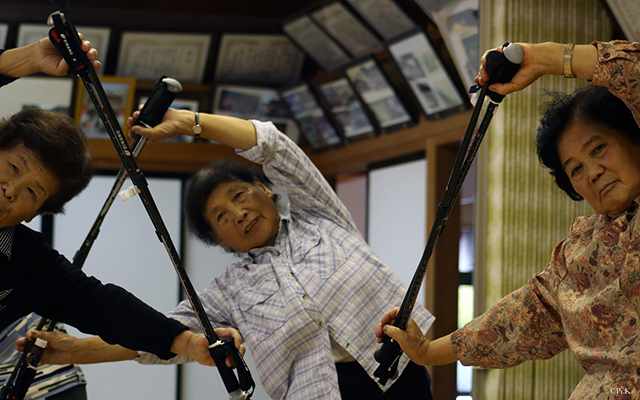Since the 1980s, long-term care policies in many Western countries have been considerably restructured, with strong impact on both care users and care workers. Countries have often borrowed policy approaches from one another. Although long-term care programs in Sweden and Japan were established within the framework of different welfare systems and ideas of family responsibilities, the Swedish approach to long-term care played a significant role in the development of long-term care policies in Japan.
In Sweden, as early as the 1960s a universal public service model oriented towards social care for elderly people was gradually expanded on a municipal level. It was, then, formally regulated by a national Law on Social Service in 1982. The law stipulates a general right to assistance, giving local authorities the responsibility of ensuring that care needs are met, although the law lacks detailed regulations on eligibility or specific services. Since the 1980s, fiscal constraints and demographic changes have meant that coverage of public services has gradually declined as they were increasingly targeted to those with greatest needs. In 2012, 9% of those 65 years or older used public home care services, while 5% lived in residential care facilities. However, from an international perspective, the range of delivered services remains comparatively high, and private co-payments only cover about 5% of total care costs.
In Japan, public services to help older adults at home were also introduced in the 1960s, although these services were limited to elderly people living alone, and the program was means-tested. An emphasis on family responsibility and restrictive social rights limited home help services. Since 1989, however, a “Ten-Year Strategy of Promoting Health Care and Welfare for the Aged” (the Gold Plan) gave tax-based home help services on the municipal level, following the Swedish local public service model. However, difficulties in expanding home help services, limited municipal resources and the more critical stance of the Japanese population towards tax increases, contributed to the introduction of universal Long-Term Care Insurance (LTCI) in 2000, with a mix of tax- and social insurance financing. Within the framework of LTCI, the program granted residential care- and home help services for older adults with severe but also minor needs. This increased the number of beneficiaries considerably. In 2011, almost 13% of adults aged 65 or higher received long-term care services, with 4.4% using home help services, 5.4% attending day care centers, and 3% living in residential care facilities. In April 2015, a new reform seeks to target public support to older adults with more severe care needs; this reformed program increases co-payments from 10 to 20% of costs for higher-income elderly.
Although service provision has been marketized in both Sweden and Japan, it is still publicly funded. Sweden’s already well-established public residential and home-based care infrastructure was opened up for private non- or for-profit providers in the 1990s. Initially, marketization was based on outsourcing public care provision to mainly for-profit providers based on competition, but today, customer choice models are more common on the municipal level. In these programs, municipalities register different public and private providers, and beneficiaries may choose their provider. By 2012, about 20% of home care and residential care was in the hands of for-profit providers run by big chains.
In Japan, the LTCI opened up a market in home care, organized through competition between public, for-profit and non-profit providers, in other words a model based on customer choice. Residential care services, however, are still provided either by public or non-profit organizations. The municipalities run the system, securing finance via LTCI and tax financing, while the prefectures authorize care providers and additional tax financing. With the expansion of home help service providers due to the introduction of universal LTCI, the share of for-profit providers increased from 30% in 2000 to 63% in 2012.
With these shifts in public support, the (non-)expansion of care infrastructure and market-oriented reforms, the situation of care workers has changed significantly, especially for those employed by home help service providers. A recent inquiry into the conditions of home helpers in both countries revealed high levels of standardization of care work and high workloads. In both countries, home helpers report that their tasks are almost all decided beforehand within high-pressure scheduling, but they assess this restructuring against the background of country-specific developments. In Sweden, the gradual decline of public long-term care support, market-oriented restructuring of the existing care infrastructure together with narrow time-frames for care provision, contravene prevalent norms, leading to strong criticism by care workers. In Japan, care workers have not regarded similar developments so negatively, because the expansion of care services and public support occurred at the same time as market-oriented restructuring. However, in both countries, more than 40% of care workers are considering quitting their jobs, revealing their dissatisfaction with working conditions. In Japan, dissatisfaction mainly stems from heavy care burdens and low wages, while in Sweden programmatic changes have clearly been at the source of worker discontent.
Hildegard Theobald, University of Vechta, Germany and member of ISA Research Committees on Aging (RC11) and Poverty, Social Welfare and Social Policy (RC19) <hildegard.theobald@uni-vechta.de>
Yayoi Saito, Osaka University, Japan <ysaito@hus.osaka-u.ac.jp>





















